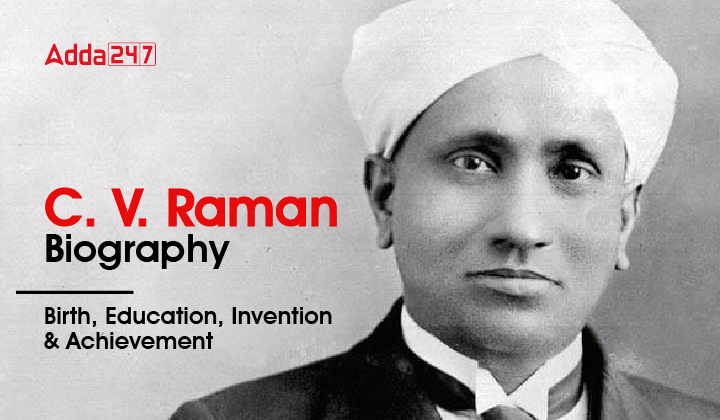Table of Contents
C. V. Raman was one of the most influential and great scientists and physicists in India. He enlightened the world about the nature of light through his extensive research and discoveries throughout his life. He discovered the “Raman Effect” which fetched him the Nobel Prize in Physics in 1930. The Government of India has declared 28th February as the National Science day to honour the contribution of C V Raman and his discovery of the “Raman Effect”.
C. V. Raman Biography
Chandrasekhara Venkata Raman, commonly known as C. V. Raman, was an Indian physicist born on November 7, 1888, in Thiruvanaikaval, Tiruchirapalli, Madras Presidency (now in Tamil Nadu, India). He is renowned for his groundbreaking work in the field of light scattering, which earned him the Nobel Prize in Physics in 1930. Raman made significant contributions to the study of light and its interactions with matter, leading to the discovery of the “Raman Effect.”
C. V. Raman Birth Date
C. V. Raman was born on 7th November 1888 at Tiruchirapalli, Madras Presidency (Now Tamil Nadu). His parents were Chandrasekhara Ramanathan Iyer and Parvathi Ammal who belonged to Tamil Brahmin Family. C. V. Raman’s full name is Chandrasekhara Venkata Raman and he was the second of eight siblings. His father was Lecturer in physics at Mrs. A.V. Narasimha Rao College.
C. V. Raman Education & Career
C. V. Raman attained B. A degree from the University of Madras in 1904 and secured a gold medal in Physics and English. At the age of 18, he published his first scientific paper on “Unsymmetrical diffraction bands due to a rectangular aperture” in the British journal Philosophical Magazine in 1906. In 1907, he completed his Masters from the same university with distinction.
He served as a civil servant for 10 years from 1907 to 1917 as he passed the examination for the Indian Finance Service. During this period he also continued his research at the Indian Association for the Cultivation of Science (IACS). In 1917, he became a full-fledged professor at the University of Calcutta. He was elected as a Fellow of the Royal Society in 1924 and in 1926 he published the first edition of the Indian Journal of Physics and acted as the first editor.
C. V. Raman Invention & Discovery
On 28th February 1928, C. V. Raman published the second edition/ volume of the journal where he published the famous article “A new radiation” to report the discovery of the Raman effect. C. V. Raman developed a spectrograph to study and discover a phenomenon of the light deflected that has traversed through transparent material changing its wavelength and frequency. This phenomenon was called the “scattering of light” and later it came to know as the “Raman Effect”. C. V. Raman was conferred with the Nobel Prize in Physics in 1930 for his outstanding research and discovery of the “Raman Effect”.
C. V. Raman Achievement
C. V. Raman is a Nobel Laureate and a Fellow of the Royal Society. However, he resigned from the fellowship in 1968 for unrecorded reasons, the only Indian FRS ever to do so. He received Bharat Ratna in 1954. He was also awarded the Lenin Peace Prize in 1957. Check out the list of awards received by C. V. Raman in detail.
| Year | Award |
| 1912 | Curzon Research Award |
| 1913 | Woodburn Research Medal |
| 1928 | Matteucci Medal |
| 1930 | Lord Irwin, the Viceroy of India, conferred him a Knight Bachelor |
| 1930 | Nobel Prize in Physics |
| 1930 | Hughes Medal of the Royal Society |
| 1941 | Franklin Medal |
| 1954 | Bharat Ratna |
| 1957 | Lenin Peace Prize |
C. V. Raman Death and Legacy
C. V. Raman passed away on November 21, 1970, leaving behind a legacy of scientific discovery and innovation. His contributions to the field of physics have continued to inspire generations of scientists and researchers, both in India and around the world. He remains one of India’s most respected and celebrated scientific minds.



 EMRS Answer Key 2025 (Out Soon), Downloa...
EMRS Answer Key 2025 (Out Soon), Downloa...
 Assam SLET 2026 Notification, Online For...
Assam SLET 2026 Notification, Online For...
 UGC NET Commerce Exam Analysis 2026, Dif...
UGC NET Commerce Exam Analysis 2026, Dif...












